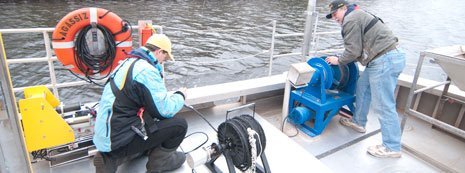Influences of colloidal and photo-stability on photocatalytic H2 generation of visible-light-driven water splitting system
Document Type
Presentation
Publication Date
8-2014
Abstract
Hydrogen (H2) production using visible-light photocatalysis for water splitting has attracted considerable attention owing to the growing demand for environmentally friendly and sustainable energy sources. Efficient photocatalytic water-splitting systems require stable photocatalysts with high photocatalytic activity. This presentation will briefly demonstrate our previous work on H2 production under visible light irradiation (400–690 nm) with the multicomponent sulfide photocatalyst (Ru/(CuAg)0.15In0.3Zn1.4S2). Particularly, the characterization of band structures, crystallinity, and particle size will be demonstrated. Further we examined the stability and reusability of the catalyst over multiple cycles of H2 production and catalyst regeneration, which are largely unexplored by many previous studies as shown in Fig. 1. The results showed that the catalyst had the highest apparent quantum yield (∼12.8%) at 420 nm and the greatest H2 production rate (∼525 µmol·h-1) at pH 2. After seven consecutive reaction cycles, the quantum yield at the initial pH 4 decreased from 4.6% to 3.0% at the end of the seventh cycle. The decrease occurred largely because (1) particles of the catalyst underwent pronounced aggregation, which led to the increase in particle size; and (2) a release of significant metal ions was observed during H2production, which led to a loss of the catalyst mass and potential changes in the photocatalytic activity. Overall, the results highlight a need to search for stable and efficient photocatalysts for water splitting with advanced approaches such as colloidal surface modification.
Publication Title
ACS National Meeting 2014
Recommended Citation
Zhang, W.,
Zhang, G.,
Minakata, D.,
Chen, Y.,
&
Crittenden, J.
(2014).
Influences of colloidal and photo-stability on photocatalytic H2 generation of visible-light-driven water splitting system.
ACS National Meeting 2014.
Retrieved from: https://digitalcommons.mtu.edu/cee-fp/30


Publisher's Statement
Published by the American Chemical Society.